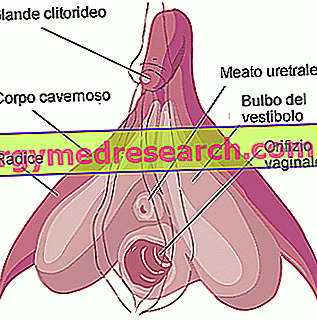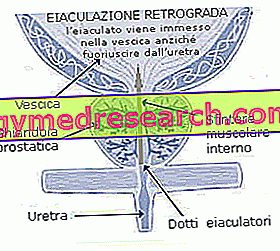Generality
Calcifications are alterations of the breast that can be correlated to the presence of a pathology which, depending on the case, may be benign or malignant. These lesions are the result of the deposit of calcium salts in the breast tissue and - due to their marked contrast to X-rays - can be visualized by mammography .

Usually, benign-looking mammary calcifications are isolated and round, while those of malignant conformation are heterogeneous in shape and density, grouped and pleomorphic.
Deposits of calcium salts are often related to benign alterations of breast tissue and, in most cases, are not dangerous. Sometimes, however, microcalcifications (ie small opacities) can become pre-tumor warning signs : about 30% of malignant neoplasms of the breast are diagnosed only thanks to the presence of these alterations.
When breast calcifications have characteristics of certain benignity, the normal annual mammographic checks continue; if there are elements of diagnostic doubt, instead, it is necessary to proceed to the biopsy for the histological definition .
What are?
Mammary calcifications are deposits of calcium salts . These lesions are painless and generally not palpable.
The most appropriate technique for their visualization is mammography : breast calcifications are easily seen due to their radiographic contrast with respect to mammary tissues.
These small mineral deposits can be observed in both normal and pathological breasts. For this reason, their characteristics must be carefully analyzed.
Exams
How can they be identified?
Alterations in the density of the mammary gland can be identified on palpation by the expert clinician (if the lesion is superficially located and has a diameter of at least 1 cm) or by imaging.
Their finding is possible above all during the mammographic examination, a routine survey useful for the early diagnosis of breast cancer. Mammography, in fact, can identify small anomalies of glandular density (less than 1 cm in diameter), even if located in deeper locations.
At the time of diagnosis, breast calcifications must be described with precise criteria:
- Morphology: shape, margins, contours and dimensions;
- Localization within the mammary gland;
- Relationships with surrounding tissues.
From the mammographic point of view, mammary calcifications can be an isolated finding or be associated with the presence of nodules or parenchymal distortions . In addition to these anomalies, it is also possible to find dilated ducts, increased lymph nodes, thickening or retraction of the skin profile and areola changes.
As for the diagnosis, it is important to evaluate their evolution over time, comparing mammograms with those of previous years.
Pathological meaning
Breast calcifications can indicate benign situations, found, for example, in inflammation of the galactophore ducts (galactophorites) or in a normal aging process of the mammary gland. These lesions are therefore not necessarily the expression of a tumor process.
In some cases, however, breast calcifications can become the index of an area of the mammary gland in the course of alteration; in this sense, they represent the warning light for a neoplasm, on which to intervene as soon as possible from the therapeutic point of view.

In general, large, rounded and scattered formations are more common in benign breast diseases, while small iron filing opacities are more associated with neoplastic processes.
With regard to breast cancer, the most significant pathological picture is represented by rounded nodules with irregular contours and blurred margins, often associated with microcalcifications.
Benign calcifications
As we have seen, the main criterion used to differentiate benign-to-malignant calcifications is the size . The opacities due to deposits of calcium salts also tend to have regular margins and homogeneous density.
In fibroadenomas, we typically and commonly find coarse calcifications, some millimeters in diameter, defined as "on a map" or "a pop corn". Other mineral deposits of discrete dimensions can be found on the walls of cysts or in the sites of processes of cellular necrosis (absolutely harmless) consequent to trauma to the breast tissue, surgical interventions or previous inflammations. Breast calcifications can also be a result of aging : these lesions depend on the deposit of fat and calcium salts in the breast tissue.

Common occurrence is the appearance of breast calcifications after radiation therapy . Furthermore, it should be pointed out that the pigments in tattoos, deodorant residues and certain cosmetics are often radio-opaque and can sometimes simulate the presence of benign calcifications.
Malignant microcalcifications
The causes of breast calcifications include the pathological processes associated with the proliferation of cells within the galactophore ducts, in its different degrees of evolution (from more or less atypical hyperplasia, to intraductal neoplasms, to actual infiltrating ductal carcinomas). ).
The shape and the distribution of the microcalcifications allow to draw indications on the possible presence of a precancerous or a mammary carcinoma. In neoplastic pathology, the mineral deposits detected with mammography are appreciable in about 30% of carcinomas.
These formations can be found within a nodule or in the vicinity of this. Furthermore, in some cases, microcalcifications are the only anomalies that can indicate the presence of a tumor.
These lesions generally have a size ranging from 0.1 mm to 0.5 mm: the dimensions are, however, extremely variable and influenced by the current breast disease. In some carcinomas, such as the ductal one, in fact, mineral deposits can be linear and larger.
Doubtful or suspicious breast microcalcifications for a malignant disease (granular, linear or branched) must be studied with direct radiographic enlargement.
Importance of early diagnosis
The finding of breast calcifications with mammography, before the oncological pathology manifests itself clinically, is very important. The removal of these neoplastic tissues in the initial phase, very often still not invasive, prevents the development of a more serious and dangerous tumor.
Mammography can then be completed, depending on the case, also by ultrasound which is not, however, able to identify the microcalcifications, visible only with mammography. On the other hand, breast ultrasound is able to detect small nodular formations that may be invisible on mammography examination. For this reason, the two exams are considered complementary.
Features and differential diagnosis
When a mammogram is performed, a series of aspects relating to calcifications, such as shape, density, number and distribution, are evaluated with particular attention: these parameters allow the radiologist and the specialist to draw useful information on small mineral deposits and to define the benevolence or otherwise of the situation.
Form
Breast calcifications can result:
- Irregular (suspicious);
- Round (more common in benign pathology);
- Granular or dusty (suspicious);
- Of point-like appearance;
- Linear, rod-shaped and branched (suspicious);
The irregular shape is the most significant, as it has a high predictive value (equal to about 80% of cases) of carcinomas with microcalcifications. On the other hand, the roundish mineral deposits scattered in the breast tissue, which are often the residue of past mastitis, are of less concern.
Distribution
The distribution of calcifications plays an important role in clinical diagnosis. The most suspicious lesions are the massed microcalcifications or "iron filings", which have an irregular shape and are concentrated in the galactophore ducts.
Even very small lesions, but distributed throughout the gland or in extended sectors of the gland, not grouped together, especially if bilateral, are generally benign.
Number
Numerous and localized calcifications of the breast in a restricted area of the mammary parenchyma can have a prognostic significance of a neoplastic type.
Density
The density of breast calcifications is generally high, but may vary from one lesion to another.
Diagnostic studies
If during the mammography calcifications are found, the doctor (radiologist) can indicate the execution of more detailed investigations, in order to exclude any diagnostic doubts and have the most precise response possible.
In the presence of suspicious alterations, therefore, it is necessary to take a breast biopsy to define the nature and histopathological characteristics of the lesion.
- Breast calcifications that are benign in nature do not generally require any type of deepening, but it is advisable to perform a control mammogram once a year.
- If slightly anomalous breast microcalcifications are found, these can be classified as "probably benign" . For the correct definition of the pathological condition, a slight atypia can make further examinations necessary. "Probably benign" breast calcifications in about 98% of cases are harmless. Typically, for these lesions a mammogram follow-up is indicated every six months, for at least a year, in order to monitor that no changes are taking place on the tissue.
- If these deposits are irregular in shape or size or are tightly attached to the breast tissue, they may suggest the suspicion that they are initial manifestations of a tumor, often "in situ" (non-invasive); in these cases, more in-depth investigations are required. Usually, a histological sample is indicated by a stereotactic or surgical biopsy, with preoperative radiological localization. The tissue samples containing the microcalcifications thus collected are then analyzed under the microscope by the pathological anatomy specialist, who will provide for the complete evaluation of the histotype, the degree of differentiation of the lesion and, if necessary, of the functional characteristics through antigen reactions - antibody with immunohistochemistry methods. In some cases, tissues can be the subject of molecular studies.
If the presence of tumor cells is confirmed in the amount of breast tissue containing calcification, the doctor can arrange the most appropriate surgical procedure for the case to eliminate the remaining neoplastic tissues.



